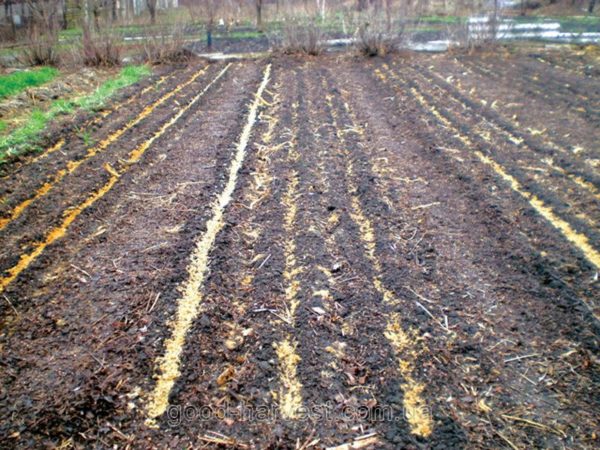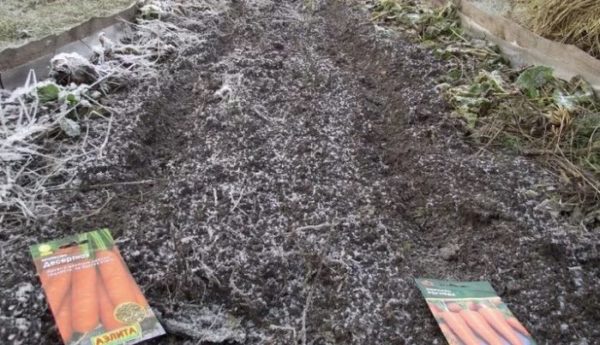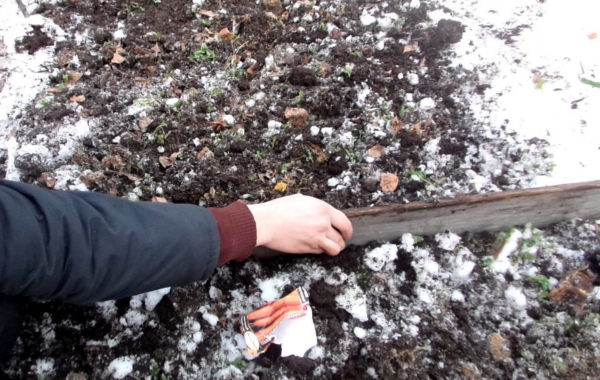Let's weigh the pros and cons of winter sowing. The biggest plus is earlier vitamins on our table. In the spring, sowing carrots or dill early is hampered not only by more urgent work, but also by unaerated soil, which cannot be prepared for sowing, and by bad weather that occurs on weekends, when we can go to the country. And while spring and we are rocking, winter crops can sprout.
The second advantage is healthier and more productive vegetables that grow from seeds that are hardened in natural conditions. By starting the growing season early, winter-sown vegetables have time to form a good root system before the onset of hot weather, and this makes them more resistant to weather stress.
The third advantage of autumn sowings is their greater efficiency. Before winter, you can sow seeds whose shelf life is coming to an end. If you leave them until spring, indoors they will lose their last vitality. And being sown before winter, on the contrary, they will replenish energy from the earth and melt water. Pre-winter crops also save our energy. Early seedlings do not need to be watered for some time: spring moisture is enough for them.
There are even more advantages to sowing vegetables in autumn, the seeds of which do not germinate without stratification. These include katran - a more peaceful relative of horseradish. Parsnip and dill seeds also germinate more actively after cold treatment.
The disadvantages of winter sowing are associated with the unstable weather of our winter. After a cold snap, a thaw may occur and the sown seeds will swell or even germinate and be destroyed by frost, which will inevitably return. The disadvantage is serious, but its consequences can be mitigated...
Choosing a bed for winter sowing
It should be well lit in order to quickly warm up in early spring; don’t get too windy, so as not to be left without snow in winter; should not be washed away by spring waters. Naturally, knowing that we are going to sow before winter, we do not ignore our predecessors.
If the bed has not yet been dug up, add good humus or compost, phosphorus-potassium fertilizers. After digging, we level it and make grooves 3-5 cm deep.To prevent autumn rains from excessively moistening and compacting the soil (both of which are not good for “winter” seeds), before sowing it can be covered with a film, preferably on arches.
While it’s dry and not frosty, we’ll stock up on a few buckets of loose soil mixture and hide it under the roof so that we have something to sprinkle on the sown seeds.
Now you can calmly wait until it gets steadily colder in November to sow the seeds. It is better to sow in furrows already covered by the first frost. You can’t rush with winter sowing: it’s better to delay a little. You can even sow in furrows sprinkled with the first snow.
We use one and a half to two times more seeds than in the spring - in case not all of them sprout. In the spring it is better to thin out than to sow blemishes. Of course, we do not soak the seeds before sowing: they should remain dormant until the spring warmth. We do not compact the soil after sowing, as we usually do in the spring. By spring it will be compacted by melted snow and rain.
But a layer of compost will not be superfluous: it will protect the bed from the formation of a soil crust in the spring. After the first frost, we will additionally insulate the bed with leaves and throw branches to trap the snow. Under such shelter, the soil will not freeze too much in frosts and will not thaw quickly during thaws, and therefore the seeds have a better chance of surviving the winter safely.
Early in the spring we will remove the insulation so that the soil warms up faster and the seeds sprout. You can bring spring closer to a separate bed by covering it with film on the arches. We will hasten the delayed snow by dusting it with wood ash.
Which seeds to choose for autumn sowing?
Seeds with an expiring shelf life have already been discussed. If you decide to sow with high-quality seeds, you need to select the most full-bodied ones, and even better - granulated ones, which are protected from premature exposure to moisture.
What crops can be sown before winter?
Among the “serious” vegetables, carrots (Moscow Winter, Nantes, Incomparable), beets (Podzimnyaya, Cold-resistant), parsnips (Kulinar, Krugly), and onions (nigella) are traditionally sown before winter.
You shouldn't sow radishes before winter - there will be a lot of flowering plants. Having decided to sow parsley and celery before winter, we will choose leaf varieties. We will definitely sow dill: its seeds germinate better after winter treatments. You can also sow spinach, lettuce, borage, and fill a separate bed with flowers.
For example, asters sown before winter grow more resistant to disease and bloom almost at the same time as those grown from seedlings. After winter, eschscholzia, nigella, calendula, delphinium, etc. germinate well.




 CUCUMBERS NEVER GET SICK, I'VE BEEN USING ONLY THIS FOR 40 YEARS! I SHARE A SECRET WITH YOU, CUCUMBERS ARE LIKE THE PICTURE!
CUCUMBERS NEVER GET SICK, I'VE BEEN USING ONLY THIS FOR 40 YEARS! I SHARE A SECRET WITH YOU, CUCUMBERS ARE LIKE THE PICTURE! You can dig a bucket of potatoes from each bush. Do you think these are fairy tales? Watch the video
You can dig a bucket of potatoes from each bush. Do you think these are fairy tales? Watch the video
 How our fellow gardeners work in Korea. There is a lot to learn and just fun to watch.
How our fellow gardeners work in Korea. There is a lot to learn and just fun to watch. Eye trainer.The author claims that with daily viewing, vision is restored. They don't charge money for views.
Eye trainer.The author claims that with daily viewing, vision is restored. They don't charge money for views. A 3-ingredient cake recipe in 30 minutes is better than Napoleon. Simple and very tasty.
A 3-ingredient cake recipe in 30 minutes is better than Napoleon. Simple and very tasty. Therapeutic exercises for cervical osteochondrosis. A complete set of exercises.
Therapeutic exercises for cervical osteochondrosis. A complete set of exercises. Which indoor plants match your zodiac sign?
Which indoor plants match your zodiac sign? What about them? Excursion to German dachas.
What about them? Excursion to German dachas.